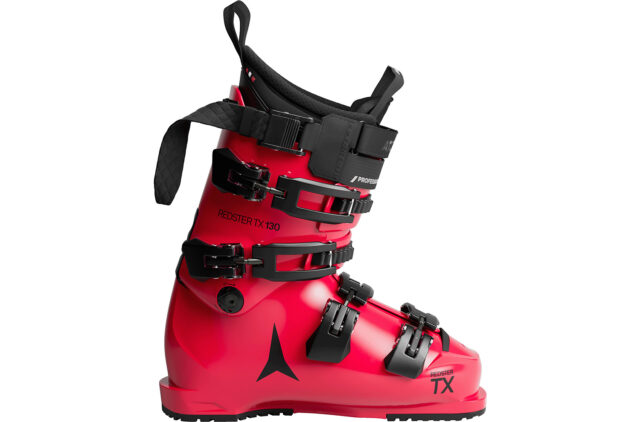
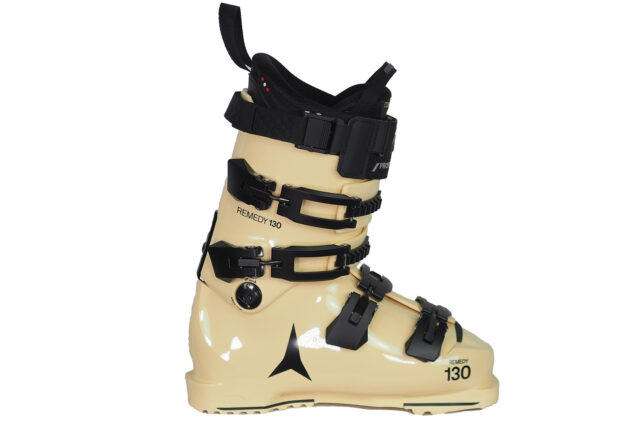
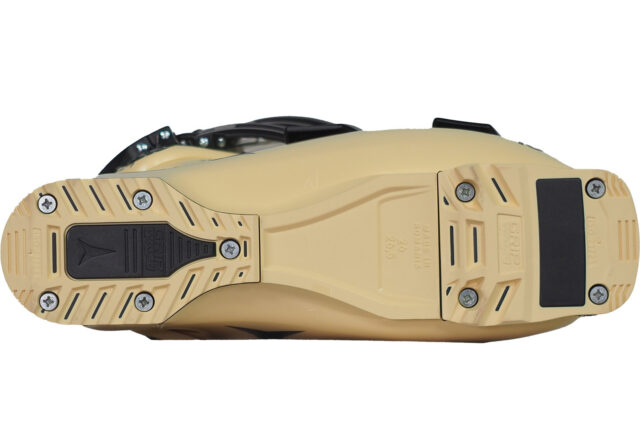
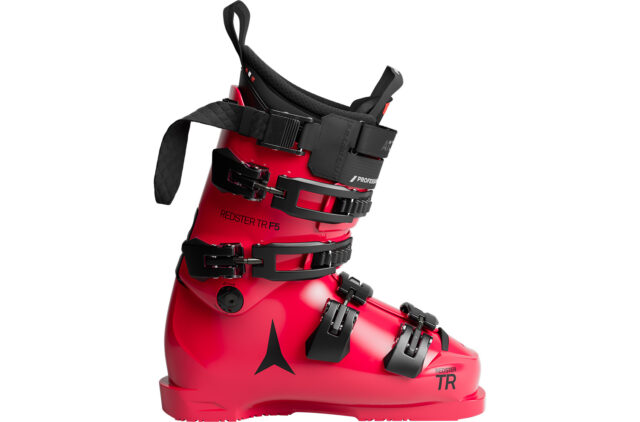
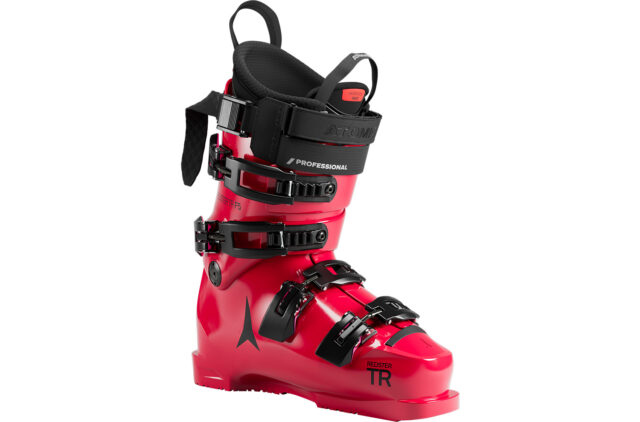
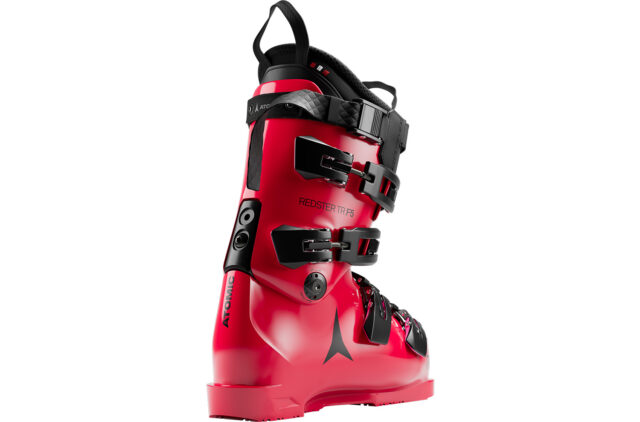
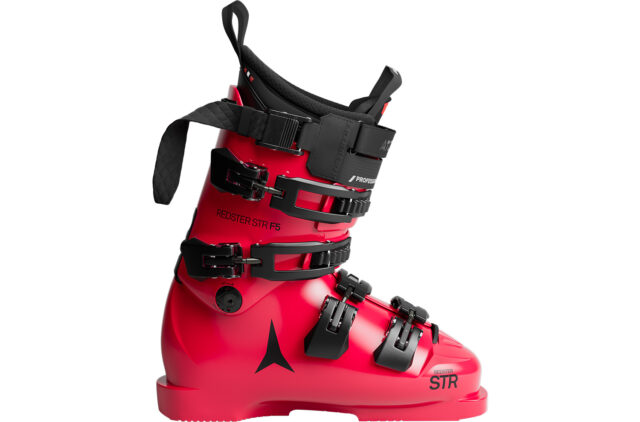
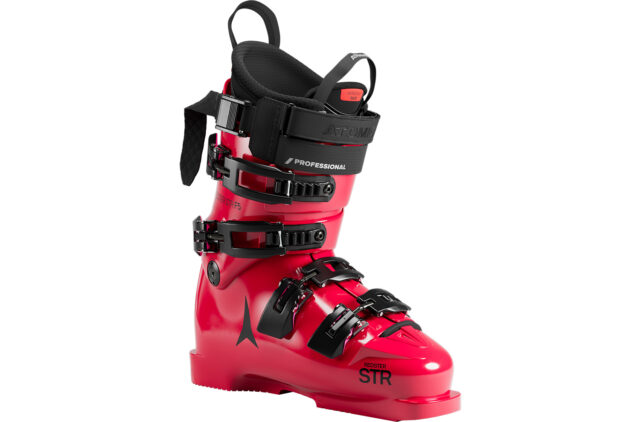
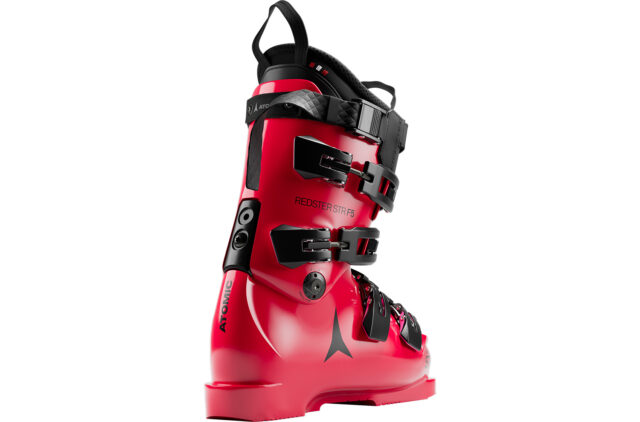
Leave a rating and / or review in the Apple Podcast app or on the Spotify app.
This free, 30-second action on your part lets us know you value all the time & energy that goes into producing & publishing GEAR:30, and it ensures that we can keep the show going.
How to Leave a Rating / Review on Apple Podcasts
- Open the Apple Podcast App
- (if you’re on your phone, simply click this link)
- Go to the icons at the bottom of the screen and choose “search”
- Search for “GEAR:30”
- Click on the SHOW — *not* the specific episode
- Scroll down to “Ratings and Reviews”
- Click on “Tap to Rate” and leave us a 5-Star Rating!
- Below that, you can click Write a Review if you’d like to share a few words
How to Leave a Rating on Spotify
- Currently, you can only rate a podcast in the Spotify mobile app
- (if you’re on your phone, simply click this link)
- Navigate to the GEAR:30 show on Spotify (not to a specific episode)
- Tap the star icon underneath the podcast description and if you like the show, leave a 5-star rating
- On Spotify, you need to listen to at least one episode before you can rate a podcast.
What’s the difference between a true race boot; a race-inspired ski boot; and a high-performance freeride or freestyle boot? Matt and Jonathan discuss all of these things and more, and you’ll hear the most important rant / public service announcement in GEAR:30 history.
RELATED LINKS:
Blister Rec Shop: Willi’s
Become a BLISTER+ Member
Join us @ Blister Summit 2025
JE’s Flash Review of Atomic Remedy 130
TOPICS & TIMES:
How Atomic Protects Their Athletes ( 2:22)
Update: Blister Summit Forecast (3:16)
Important Rant / PSA: “Plug Boots” (5:37)
Overview of Atomic’s New Boots (15:57)
New Redster Boots: TR, STR, & TX (19:10)
Redster TX & Remedy 130 (23:43)
Formula Plastics (36:57)
The ‘Uh Oh’ Boot (46:44)
More on the Remedy 130 (51:18)
Redster vs Remedy Shells (54:19)
Other Elements of the Remedy (56:31)
Geometry Changes (1:01:54)
Adding Screws & Flex Patterns (1:06:05)
New Liners (1:12:58)
Q: World’s Greatest Technology? (1:20:00)
Fancy Custom Race Boots (1:21:20)
Heat Moldable Shells? (1:26:42)
Dual BOA (1:30:36)







Jonathan, the term plug boot was coined to refer to a special order race boot that a shop never carries in their inventory. I heard of it back in the 80’s. It was probably coined by ski shops, at least that is where I heard it first. If your opening rant was serious, you are off base. It means the narrow lasted (typically 92mm) boots that only racer types would special order from the ski company. Since they are narrow, most people (talking general public) needed grinding and shaping to be able to wear them. Hence the term “plug” came about as an exaggeration of saying “they are made with a plug interior shell shape (meaning non-anatomical) that has to be custom shaped to each person’s foot”. Of course this wasn’t really true, but from the perspective of a ski shop salesperson, almost every “plug” boot sold needed grinding so it seemed like a non-anatomical last to the ski shop rat. This was during a time when there were lots of ski shops and very few boot fitters. Ski shop employee’s perspective comes from their sales experience and not from any knowledge of manufacturing a ski boot. My first boots were leather, so coming of age for plastic boots had all kinds of weird designs and mis-information. Plug meant 4 buckles, stiff, needed bootfitting, special order, and the type of boot ski racers used. It has never referred to any part of a boot mold or manufacturing method, although a lot of people made incorrect assumptions about that.
Hi, Scott – the origins story here seems pretty accurate. But all these years later, it’s time to move on. Where you and I definitely agree (and as I said in the podcast) people use the term to talk about a narrow-lasted boot that has had (comparatively) minimal shaping. But now, it’s mostly just a misleading term, and one that it’s time to let go of in the interest of, you know, truth, accuracy, and a ‘nobody cares that you tele or ski a “plug” boot’ sensibility. :)
It just seems like a lot of unnecessary energy to eradicate a term that has been in the vernacular of the sport for decades. I understand your point that it’s not necessarily an accurate term, but it’s commonly understood and used. I’m reminded of people in the 90’s complaining that Alanis Morissette’s song Ironic didn’t meet their definition of irony. Meanwhile, Webster had already added multiple definitions of irony largely to include common usage.
The interesting thing about language is that what words mean is ultimately defined by how people use them.
I think that most people are aware that a “plug” is simply a boot that is lasted 5-6 mm narrower than the manufacturer’s “low volume”/”performance fit” boots, and that has a thick shell specifically to accommodate grinding as a means of accommodating the wearer’s foot. I think that the word functions perfectly well in that role, and the fact that it is apocryphal doesn’t really matter as long as its common and present meaning is clear.
We don’t need an Academie Francaise for the ski industry (https://en.wikipedia.org/wiki/Acad%C3%A9mie_Fran%C3%A7aise)
My understanding of the term is similar to ScottB’s. Previously, there was a clear distinction between the non-anatomical, thick plastic boots that actual racers used, and the gimmicky consumer race boots that showed up on shop shelves. I agree that this distinction has become more blurred, as there are now boots with similar construction but different lasts, rather than entirely different boots.
…that said, plug boot is a term that has been around for a while and has come to take on a meaning. I can see writing off a bro who’s coming on too strong and trying to impress you with their high-level gear selection as a comment on their ability level. But blanket writing people off for using an established term makes less sense to me.
So… we’re all in agreement. We all understand *how* the term got into the ecosystem. Now let’s also agree that there are more accurate and meaningful ways to talk about ski boots.
And the more knowledgeable and passionate you are about skiing and gear … the more it would seem you’d want to speak accurately about these things. (And there is that benefit of eradicating the often-accompanying whiff of trying to sound cool, maybe kinda superior, to our fellow skiers.)
In other words, there’s nothing but upside.
So now let’s all get in a circle, hold hands, and cue up ‘The Times They Are A-Changin’.
For those folks who say that “plug” has meaning for them, what does it mean to you? I ask not to be snarky, but to try to demonstrate that there will be more accurate ways to discuss differences among ski boots. Is a Redster STI 150 a plug boot? What about a Redster STI 70? The shells come out of the same mold, use the same last, have the same fit, and have the same plastic thickness. The boots themselves, however, fulfill very different purposes, only differing by plastic hardness and sole type. If they are both “plug” boots, then “plug” is not exactly a helpful attribute or modifier as these are very different boots. If only one is to be considered a plug, then we must be referring to sole type and plastic hardness, which honestly doesn’t make any sense.
My proposal: let’s just call them race boots. And with any discussion about boots within a series (150 down to 70), there will need to be a discussion about features anyway (flex, sole type, cuff shape, liner, buckles, power strap, etc.).
Terms like “plug” only add to the confusion surrounding ski boots because “plug” doesn’t relate to any thing in the mold construction nor the feature set of the boot. We can do better than “plug”… let’s speak about boots in a way that makes more sense rather than less sense.
The problem with the term “race boot” is that your industry has abused it to pointlessness by attaching it to boots that barely make the cut for beer-league use (and not even that in many cases).
The beauty of the term “plug” is that precisely that it’s so ugly that no marketer in their right mind would [ab]use it, which is why it has continued to have currency. If we stopped using that word we’d have to come up with another marketing-proof term instead. Its dubious origin is really irrelevant at this point.
And use, the STI 70 and STI 150 are both “plugs”. Very narrow lasts, check. Thick shells to allow grinding, check. Race-oriented, check. They’re just geared towards different racers. Pretty simple IMO.
Sorry to dual-reply, but to be absolutely clear I absolutely agree with you that in practice the termn “plug” is used to refer to race boots, specifically ones with narrow, low-volume lasts and thick lower shells to allow for extensive grinding (which is basically all Real ™ race boots IMO).
The only reason we don’t call them “race boots” is because various manufacturers have insisted on attaching that label to other sorts of boots over the years, such that when somebody says “race boot” we have no way to know what they want or mean. As a result we’ve evolved a beyond-awkward, marketer-proof shorthand to refer to the real deal.
IMO that’s really all there is to it – a spectacularly ugly workaround for bad marketing. But unless somebody can find a way to regulate marketing, I suspect that such a workaround will continue to be needed.
Sorry, still not convinced here. The term plug is inaccurate and confusing (people misuse it more than “race”), it describes nothing about the shape of the last (race boot lasts are very anatomical, just narrow AF), does not necessarily refer to super thick wall thickness (“plug” boots like Redster STR are actually thinner than “non-plug” boots like Redster TX), and not one of the craftsman/women involved in mold manufacturing, producing these boots or bringing these boots to life use this term. These folks just shake their heads and wonder what the hell North Americans are talking about and why we would introduce a term that has no bearing with how ski boots are actually made and that they themselves don’t use. If people want to continue using it, feel free but it just strikes me as super odd to use a term that is not used by those actually making the boots. It’s like walking into a Rolex or Ferrari factory and using terms that Rolex/Ferrari don’t use to describe what Rolex/Ferrari actually make. Kinda weird.
I don’t think the world “race” is as broken as you claim it is. Some brands take a little extra liberty with extending this application to the category of CS/TX boots but I don’t know of any brands that extend the application to 98mm/narrow boots. I’m happy to be corrected here, and for sure bad on any brand for doing that. In my travels, most people know/are scared of the “race boot” label. The term “race” is as scary/intimidating as ever and far more people recognize that term than “plug”. I think “race” is far from being mismanaged or overused to the point that people don’t understand what it means. It definitely has more accurate application and direct connection to the boot’s usage than “plug”.
Yeah, that’s fair, and this is probably the point where I should confess to being a 50-something. Back when I was learning in the 80s “race” equipment was what everybody wanted to ride, and as a result the manufacturers diluted the term. As a consequence we started focusing on “plug” boots and skis with “race-room tags” to describe what we really wanted.
I admit that that isn’t as much of an issue in the last 20 years. We’ve sometimes seen the “race” term being applied to 95-96 m boots (the 95 mm Dobermanns come to mind as does the Raptor) but you could argue that those are legitimately on the boundary.
I therefore acknowledge that perhaps our 80s-90s “marketing workaround” has outlived its usefulness.
BTW as a frequent boots-that-we-are-talking about flyer I 100% agree that race-boot lasts are anatomical, just narrow. To do otherwise would be silly on the part of the manufacturers, because the anatomicity (is that a word?) ultimately determines how much grinding the fitter will have to do to make it work, and time/grinding is money.
The notion that these boots were created by sticking an un-anatomical core in existing molds was and is just silly. That’s why I used the term “apochyphal” in another post, an I think that sums it up just about perfectly.
Oh yeah… did I mention that I rock a plug boot and clipless pedals?
At the same time???
I’ll take the uh-oh boot!
Jonathan, if we are going to use words that actually describe things correctly, then we should also stop using “progressive” and “linear” as if they are opposites.
Linear just means the rate of change is constant. It can still be progressive.
Hmmmm, I’m not yet persuaded here, Tjaard.
I don’t think anyone at Blister ever treats them as if they are opposites? A “progressive” flex pattern isn’t the *opposite* of a “linear” flex pattern, they’re just definitely *different*. And anyone who skis both types of boots can easily feel that difference. So … it seems to me that the words are describing something that people can and will feel.
But what do you propose?
When we talk about Linear vs. Progressive flex curves in ski boots, it is very similar to the discussion happening in mountain bike suspension too. Linear boots (or bikes) tend to have less support the deeper they travel into the flex pattern. Progressive boots (or bikes) see an increase in support (stiffness) the deeper they travel into the flex pattern. No ski boot (or bike) is truly linear with its flex pattern, but the curve isn’t nearly as different as a progressive boot would have. Our flex data for a Hawx Prime 110 and a very well known 110 flex 3-piece boot shows the Hawx boot starting out a little softer than the 3-piece during the beginning of the flex pattern but then it ramps up becoming stiffer towards the end of the flex pattern. The boot world would consider the Hawx to be a more progressive boot.
Also, although, like all of Matt’s talks, this was very informative, not just about the new boots you discussed, but also about all boots in general, I do have to dock you points for not working in the quote:
“You keep using that word. I do no think it means what you think it means” , from one of the greatest movies ever made: The Princess Bride.
We definitely should be docked points for this omission. And I agree with you – it’s an unbelievably good movie with an incredible screenplay.
Now I want to figure out how to justify doing a Blister Cinematic episode about it. I have a hunch Manser would be down to do it….
Have fun storming the castle! Yes, I am definitely down for The Phenomenology of Princess Bride And The Consequences Of Applied Meaning.
Atomic, thank you for making this boot. I fit well into the Hawx ultra (with a HV zipfit liner), but wanted a heavier boot. I tried the shadow LV and it’s a boat. Remedy sounds great.
Stoked for you to try a pair!
Hey! Thoughts on the Shadow LV? A boat meaning heavy or wide? Been in Hawx Ultras for years with a ZipFit Freeride liner (HV). Looking for something heavier and maybe a bit narrower…
What sizes will the Redster STR be available in? Thanks
STR F5 (150): 22 – 26
STR F4 (130): 22- 26
STR 3 (110): 21 – 26
STR 2 (LC) (90): 21 – 26
STR 1 (LC) (70): 21 – 26
Great episode and very informative as I’m currently debating potential new boots for next season. I went back to read your Blister review about my current boot for context in my decision (Salomon X Pro 120, written by Jonathan on February 27, 2014), and imagine my horror when I discovered Jonathan’s description:
“The shell of the X Pro 120 can only expand, so the idea here—if what you’re after is a high performance fit—is to basically approach the heat moldable shell as if it was a PLUG race boot…” (emphasis added).
Appears I’ve discovered where this recent trend originated! : )
I think we can all agree that Jonathan has come a long way since 2014 ;)
Awesome pod as always. Bless you, Matt Manser. Smart updates to the Redster line. More room in the toe box, and more temperature stable plastic are obvious improvements. Didn’t expect such changes to the liner. I’m curious to check out the liner in person.
Lots of great things happening, glad you’re liking what is coming out!
I can’t be the only one that thinks the ‘Uh Oh’ Boot sounds amazing haha. Blister/JE take my money for those shells! :)
I’m sure Jonathan can cut you a Blister Member deal on them ;)
I have Venmo ready to go haha… whatever it takes! Also, huge thank you for sharing your knowledge and insights with the broader ski community, through forums, and for participating in podcasts with Blister! We all appreciate your time ONK, and JE too for organizing/hosting!
An advantage of ‘plug boot’ over ‘race boot’, though, is that ‘plug boot’ describes the boot construction rather than its (potential) application. Most people riding Redsters aren’t racing. I’d suggest categorizing the Redster and its competitors as “race-gauge” or “race-thickness” ski boots.